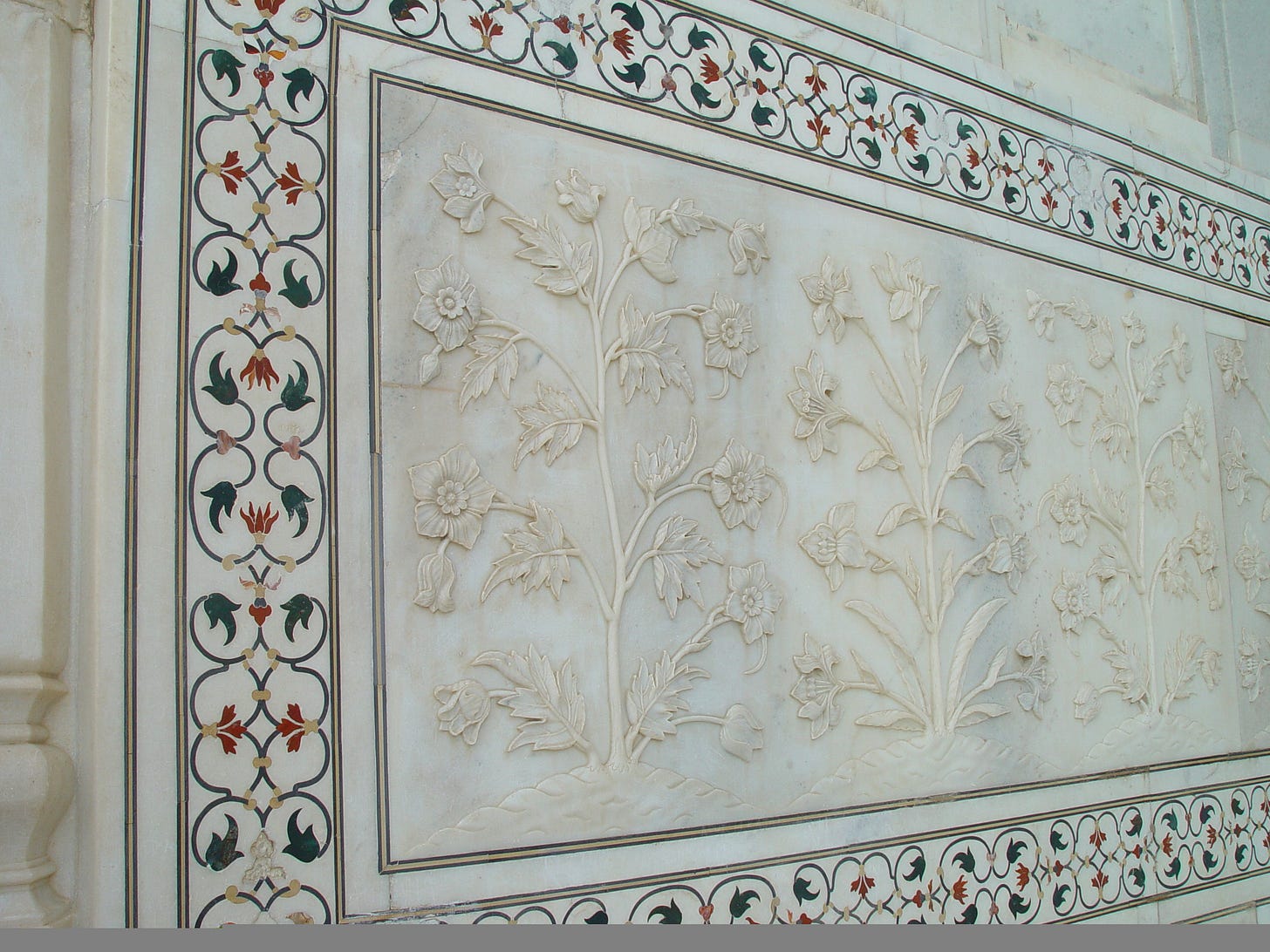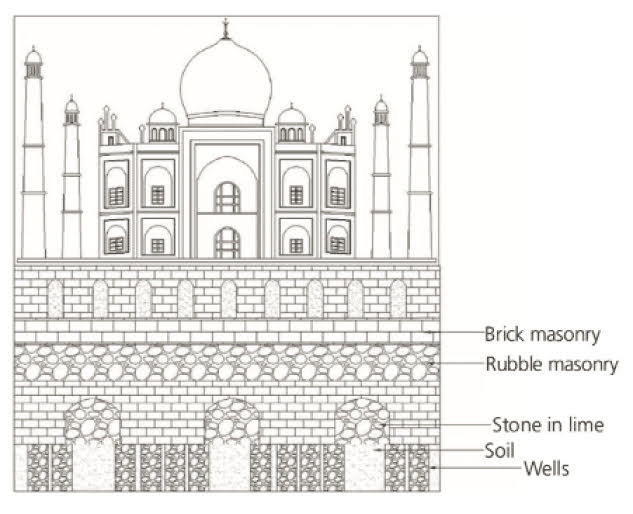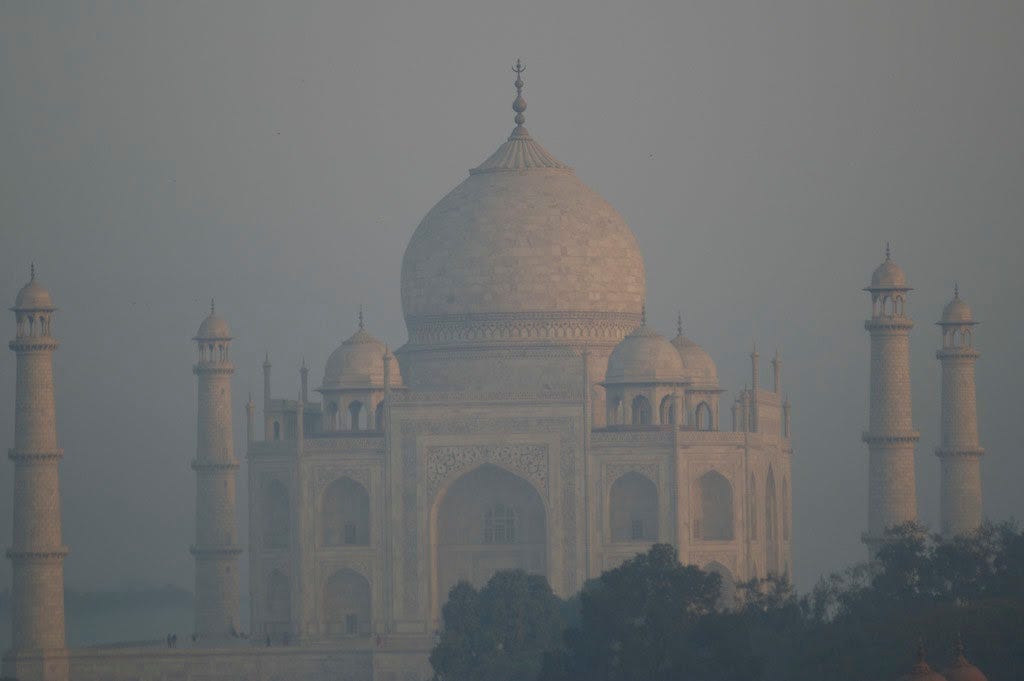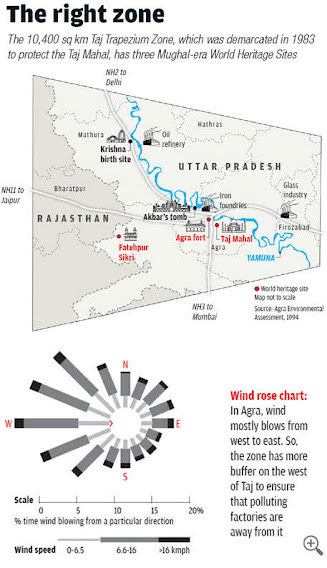Everything You Need to Know About Taj Mahal (2)
Part 2/2: Materials and Construction, Foundation, and Threats to Taj Mahal
In the previous article, we have covered information on Architecture, Structure, and Visual Tricks of Taj Mahal. In this final part, we shall see details on materials used for the monument, its construction process and the engineering behind its foundation, in addition to covering the dangers to Taj’s existence.
Materials and Construction
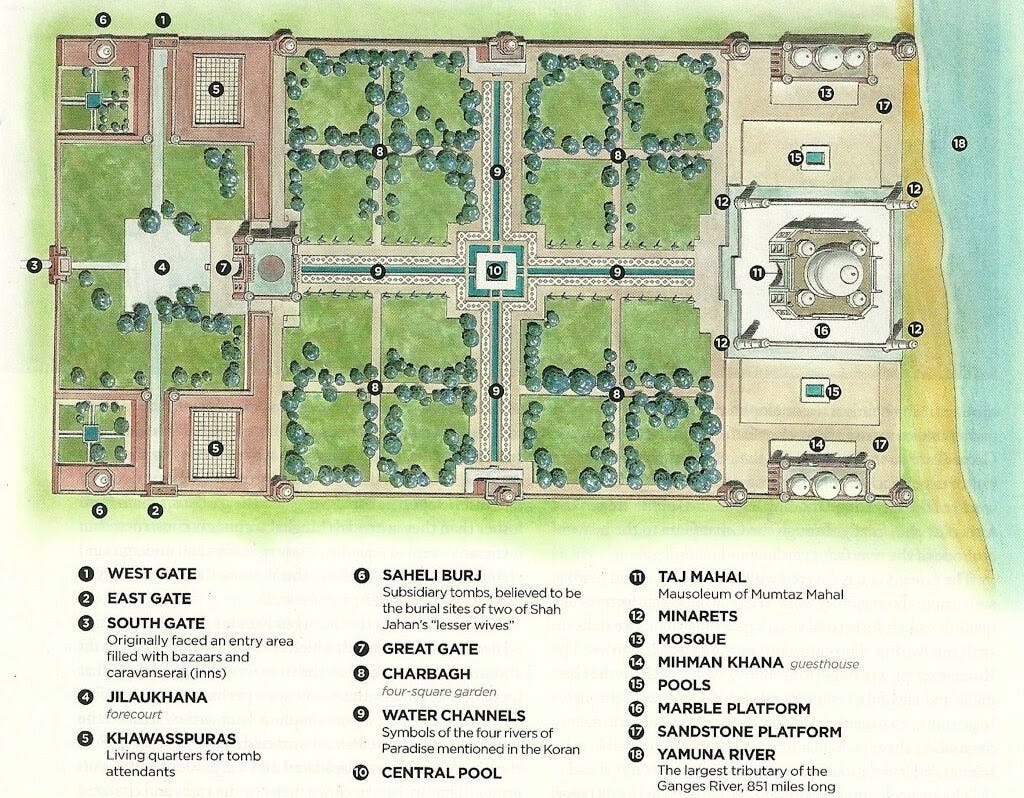
The materials for building the exquisite monument were acquired from all across India and Asia. The core of the buildings comprises thick walls of brick and stone and facing was completed with marble for the mausoleum, and sandstone for the other buildings. The sandstone was obtained from Fatehpur Sikri while the white marble was extracted from quarries in Makrana, Rajasthan.
About 28 precious and semi-precious stones were used to decorate the Taj Mahal. The Jasper was brought from Punjab, Jade and crystal from China, and turquoise from Tibet. The Lapis lazuli came from Afghanistan, while the sapphire from Sri Lanka and the carnelian from Arabia.
Taj Mahal's construction called for the efforts of over 20,000 masons, stonecutters, painters, and artisans. Over 1,000 elephants were used to transport the materials. Instead of ordinary bamboos, the scaffolding is said to have been constructed in the form of thick brick walls that mirrored the mausoleum.
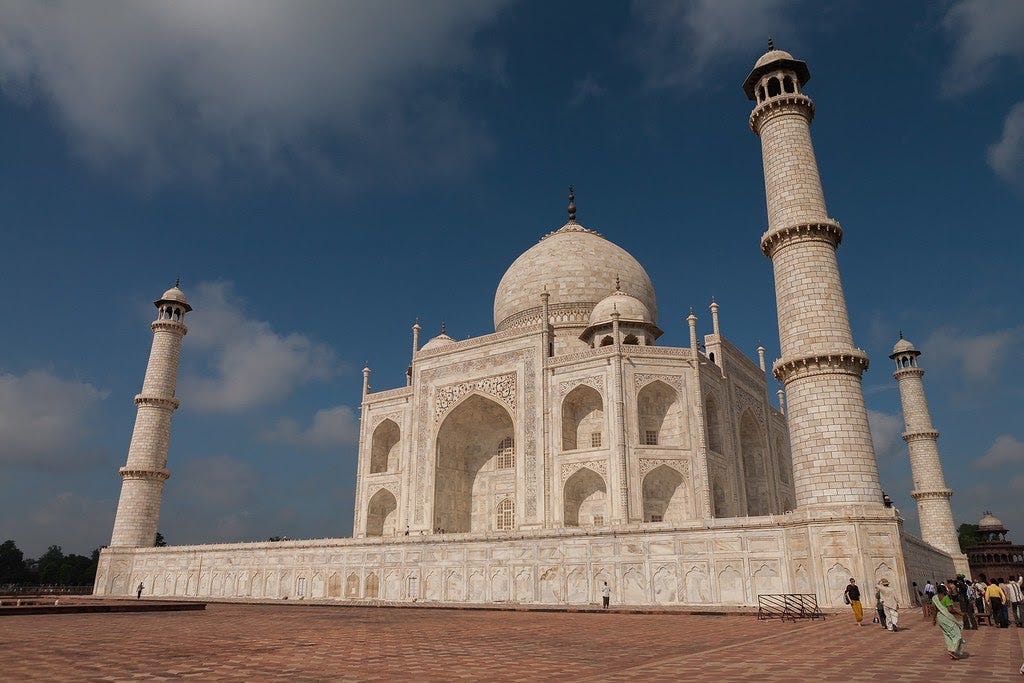
A 15-kilometer long earthen ramp was prepared to transit materials to the site and teams of about twenty oxen pulled blocks on specially designed wagons. Post-and-beam pulley system was used to raise these blocks into place. The mausoleum building took 16 years to complete, with the minarets, Mosque, Jawab and gateway requiring additional time for completion.
Foundation
Taj Mahal is still structurally sound after over three centuries due to its robust foundation. Given the Taj's proximity to Yamuna river, its construction must have been a formidable challenge. Clayey soil near riverbanks is considered unfavourable for construction due to its unpredictable nature and thus the site required creative engineering to be able to withstand the heavy weight of Taj Mahal.
The foundation of the Taj consists of deep wells sunk on the bank of Yamuna river. These wells were then cased in timber and filled with rubble and mortar. A grid of piers and arches was constructed over the wells and a thick layer of sandstone was placed above it to evenly distribute the superstructure load over the base. With the help of Ground Penetrating Radar, researchers have discovered the depth of the well foundation to be 17.5 m.
Threats to Taj Mahal
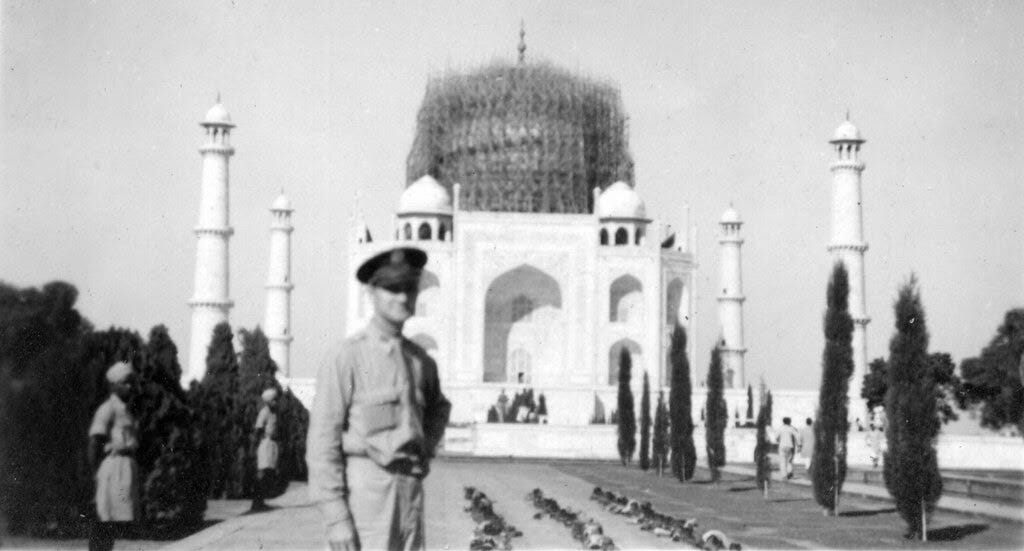
During World War 2 and India-Pakistan wars, recognizing the potential of an aerial attack, Taj Mahal was hidden by the British colonial and Indian governments by means of scaffolding to deceive enemy pilots. This is how the Taj was overlooked by German, Japanese, and Pakistani bomber planes and survived the perils of wars.
However, more serious threat to Taj Mahal is from environment pollution. Since the 1970s, the once milky white marble has been observed to yellow due to atmospheric pollutants. This discolouration has been attributed mainly to particulate matter such as carbon compounds, and dust resulting from agriculture and vehicular traffic. Carbon deposits are said to have originated primarily from fossil fuel combustion, cooking and brick-making. In addition, pollutants from Mathura Oil Refinery were turning the gleaming white marble brown.
Thankfully, staining due to environmental pollution was acknowledged and remedial actions were put in place. Air quality monitors were installed in the vicinity to continuously check air quality and prevent further deterioration due to atmospheric pollutants.
Also, a protected zone with a large area of 10,400 sq. km, named as Taj Trapezium Zone (TTZ), has been established around the monument to check pollution levels. In 1996, the Supreme Court ordered ban on the use of polluting fuels such as coal in industries within the TTZ. These industries were offered the choice of either switching to natural gas, or relocating outside the TTZ.
Vehicular movement has also been banned within 500 meters’ radius of the Taj's walls. Experts say these actions have helped improve air quality around the monument. However, pollution levels are still above safe limits and the Taj continues to be threatened by solid waste dumping, acid rain, dust, and falling levels of Yamuna river.
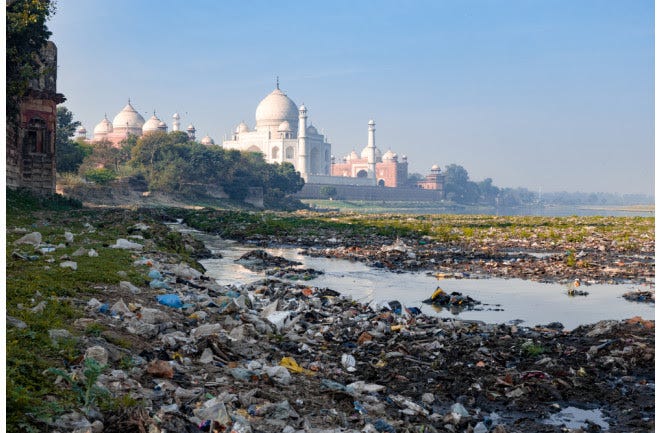
To reclaim the white colour of the marble, the monument has been given "mud pack treatment" several times in the past. This treatment is based on a traditional recipe used by Indian women to restore natural glow. In this process, a layer of lime clay is plastered over the stained areas and left to dry. Once dry, the clay layer is removed with the impurities glued on it.
Conclusion
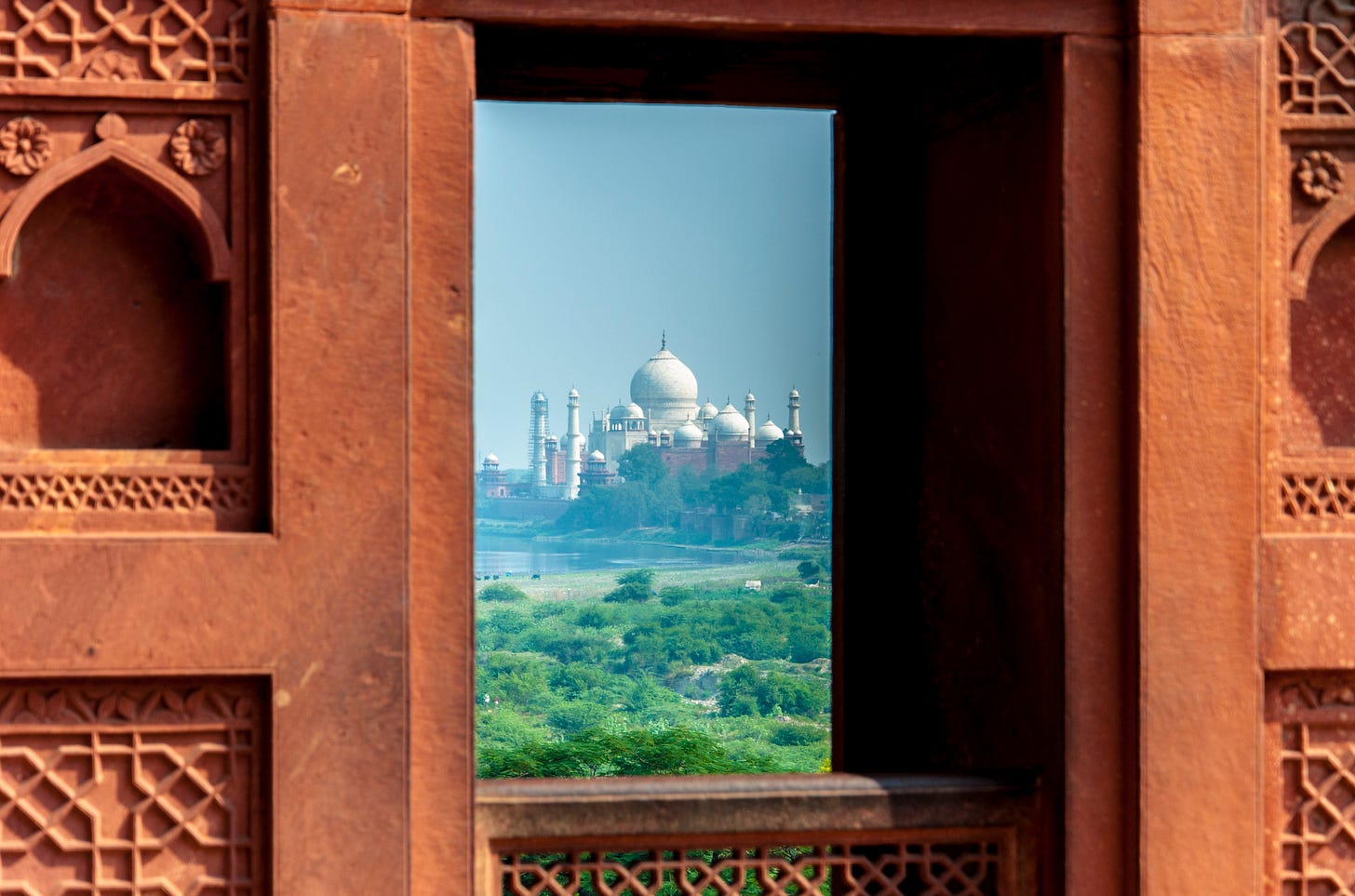
Taj Mahal, the monument of love, is among the most revered architectural marvels in the world. Architecture of the Taj is based on Indo-Islamic and Mughal styles, with emphasis on symmetry. The mausoleum consists of a chamfered cube topped with a large dome and a series of symmetrical kiosks and spires. Four tall minarets frame the mausoleum building.
Due to the proximity of the complex’s site to Yamuna river and the sheer scale of the mausoleum building, construction was a mammoth challenge. It required state-of-the-art engineering, efforts of thousands of specialized craftsmen, and materials from around the globe, in addition to a vast amount of wealth. Deep well foundation was used for the Taj, with an arrangement of piers and arches topped by a sandstone layer to distribute load.
In previous decades, the Taj has become victim of pollution, smoke and dust menace. To preserve this prized monument from deterioration, strict pollution control laws need to be adhered to. Despite environmental threats, however, the Taj continues to be an attractive tourist destination even centuries after its completion.
In the words of Bill Clinton, former US President, "There are two kinds of people in the world. Those who have seen the Taj Mahal and love it, and those who have not seen the Taj Mahal and love it."
List of References
https://www.tourmyindia.com/blog/interesting-facts-about-taj-mahal/
https://www.uniglobecarefreetravel.com/10-interesting-facts-about-the-taj-mahal
https://geographyscout.com/world/india/indias-taj-mahal/
https://www.britannica.com/topic/Taj-Mahal
https://en.m.wikipedia.org/wiki/Ustad_Ahmad_Lahori
http://whc.unesco.org/en/list/252
https://www.ibtimes.co.uk/pollution-carbon-soot-dust-discolouring-taj-mahal-1479036
https://www.bbc.com/news/world-asia-india-27753788
https://web.archive.org/web/20070913084703/http://travel.howstuffworks.com/taj-mahal-landmark.htm
https://web.archive.org/web/20080526021559/http://www.unesco.org/courier/2000_07/uk/signe.htm
https://en.m.wikipedia.org/wiki/Taj_Mahal
https://www.asiahighlights.com/india/taj-mahal-interesting-facts
https://theconstructor.org/case-study/taj-mahal-construction-foundation/59328/?amp=1
https://kalingatv.com/amp/features/taj-mahal-a-wonder-in-danger/
https://en.m.wikipedia.org/wiki/Origins_and_architecture_of_the_Taj_Mahal
http://www.ttzagra.com/
https://www.smithsonianmag.com/travel/eight-secrets-taj-mahal-180962168/




